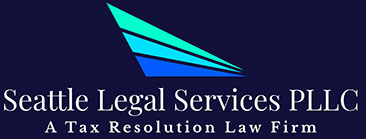
How to Appeal IRS Liens, Levies, and Other Collection Actions
One of the biggest fears when dealing with the IRS is facing a tax lien or levy. But before the IRS actually seizes your property with a levy or encumbers your property with a lien, they’ll send you a series of notices and letters. These will warn you about the collection activities that IRS plans to use and explain your right to appeal those actions.
Depending on your situation and the stage of the tax collection process, you may have several avenues available to challenge the IRS if you disagree with the lien or levy. However, one of your last chances to disagree with the IRS will usually come in the form of a Collection Due Process (CDP) hearing. In this article, we’ll explain what this is, how it works, and how you can ask for one.
What Is a Collection Due Process Hearing?
A Collection Due Process (CDP) hearing allows you to appeal an IRS collection action taken against you. The hearing goes before the IRS Independent Office of Appeals and can take multiple forms. This includes a telephone call, exchange of correspondence, or a face-to-face meeting held at the IRS Independent Office of Appeals office closest to your home or where you work. Because of the informal nature of this hearing, there’s no official record of what occurs during the hearing, and oaths aren’t usually taken (an oath here means to tell the truth under penalty of perjury).
The face-to-face option is only available in certain situations. It may not be used if you want to present one or more frivolous arguments to the IRS during your appeal. Such arguments could include contending that a particular IRS form should have been personally signed by the Secretary of the Treasury, advocating for the idea that filing and paying taxes is optional, or opposing the requirement to pay taxes on moral or religious grounds. You also can’t ask for a face-to-face meeting if you’re trying to delay or hinder the IRS’ tax collecting.
You can use the CDP hearing to contend that you’re not liable for the tax debt by arguing, for instance, that your taxes have been discharged through bankruptcy or that you’re eligible for innocent spouse relief. If you want to argue that you can’t afford to pay the full tax balance, you can’t use the CDP hearing to challenge the validity of the tax debt. Instead, you can use it to negotiate a payment plan or other method of paying the tax debt over time or delaying when you have to pay it.
After the hearing, the IRS will issue a Notice of Determination that explains its decision. If you disagree with the IRS, you will usually have 30 days to request judicial review with the U.S. Tax Court.
When to Request a Collection Due Process Hearing
Generally speaking, you should request a CDP hearing when the IRS sends you a final notice about a tax lien or levy or you receive a notice about a lien or levy that also lets you know about your right to an appeal hearing. This usually means you’ll request a CDP hearing after receiving:
- Notice of Federal Tax Lien Filing and Your Right to a Hearing Under IRS 6320 (also known as IRS Letter 3172)
- Notice of Levy on Your State Tax Refund – Notice of Your Right to a Hearing
- Notice of Jeopardy Levy and Right of Appeal
- Post Levy Collection Due Process Notice
- Final Notice of Intent to Levy and Notice of Your Right to a Hearing (also known as Letter 11 or 1058)
If you receive one of these notices or letters (or one that’s very similar), that’s when you’ll likely request a CDP hearing.
How to Request a Collection Due Process Hearing
To request a CDP hearing, you’ll use IRS Form 12153, Request for Collection Due Process or Equivalent Hearing. As far as most IRS forms go, this is fairly straightforward to complete. The hardest parts will probably be sending it to the correct IRS location and completing it on time.
You’ll send the completed 12153 form to the address provided on the IRS notice or letter informing you of your right to a CDP hearing. If you’re not 100% sure what address to use or prefer to fax Form 12153 to the IRS, call the telephone number listed on the IRS form or notice. Along with Form 12153, be sure to include a copy of the IRS letter or notice that informed you of your right to appeal.
To make the most of your CDP hearing, you must submit Form 12153 on time. This typically means filing it with the IRS within 30 days of the date of the relevant letter or notice from the IRS about the tax lien or levy. Meeting this deadline is important to ensure your right to judicial review of the CDP hearing decision should you disagree with it. It also prevents the IRS from seizing your property while your appeal is pending. Your appeal is pending until the IRS issues its Notice of Determination or the U.S. Tax Court’s decision (if you requested judicial review) is final.
What if you miss the deadline to request a CDP hearing?
If you miss this 30-day deadline, you still have another option. But instead of getting a CDP hearing, you’ll receive an equivalent hearing. This is similar to the CDP hearing, except you can’t appeal the IRS’ decision to the U.S. Tax Court if you disagree with it. Another difference is that the IRS can continue to carry out its tax levy (assuming that’s what you’re appealing) during the appeals process.
One benefit to the equivalent hearing is that the 10-year statute of limitations for the IRS to collect taxes is not suspended while your appeal is pending. To request an equivalent hearing, you must do so within one year from the date of the IRS notice or letter concerning a levy. If your IRS letter or notice relates to a tax lien instead of a levy, you have one year and five business days from the filing date of the Federal Tax Lien to request the equivalent hearing.
How does a CDP hearing affect the statute of limitations for collections?
Note that when asking the IRS for a CDP hearing, there’s a suspension of the 10-year statute of limitations. The pausing of this collection clock won’t be an issue for most taxpayers, but if you have a tax debt that’s fairly old and on the verge of becoming uncollectible due to the statute of limitations, it might not be the wisest decision to ask for a CDP hearing. Before deciding what to do, you should probably talk to a tax professional.
What Happens After You File IRS Form 12153?
If you were working with an IRS collection officer when you filed Form 12153, they may try to continue working with you to settle your tax debt while the CDP hearing request is pending. This is optional, and the collection officer may instead choose to immediately forward your case to the next step in the CDP hearing process. If the collection officer doesn’t forward your case to the CDP hearing process and you want them to, just inform them of your intentions and they should honor your request.
Alternatives to a CDP Hearing
In some cases, you can’t use the Collection Due Process hearing to challenge your tax liability directly, such as arguing the amount is wrong. If you want to make this argument (or the CDP hearing isn’t otherwise an option), you have three potential alternatives.
First, if applicable, you can ask for audit reconsideration if you have new information for the IRS. Second, you can request an Offer in Compromise on the basis of doubt as to liability. Third, you can pay off your entire tax bill and immediately file a refund claim (using IRS Form 843, Claim for Refund and Request for Abatement). Then when the IRS denies the refund claim, you can appeal that denial.
Need Help With a Collection Due Process Hearing Request?
It’s not always clear when or why you might want to request a Collection Due Process hearing. Perhaps you’re wondering if you should forgo Form 12153 and try to contest the IRS’ tax collection efforts using a different type of appeals process, such as the Collection Appeals Program (CAP). Or maybe you know requesting a CDP hearing is the right thing to do, but you’re not confident that you’re completing Form 12153 correctly. No matter what your tax concerns are, the Seattle Legal Services, PLLC can help. You can reach us online or by calling 425-428-5262.
